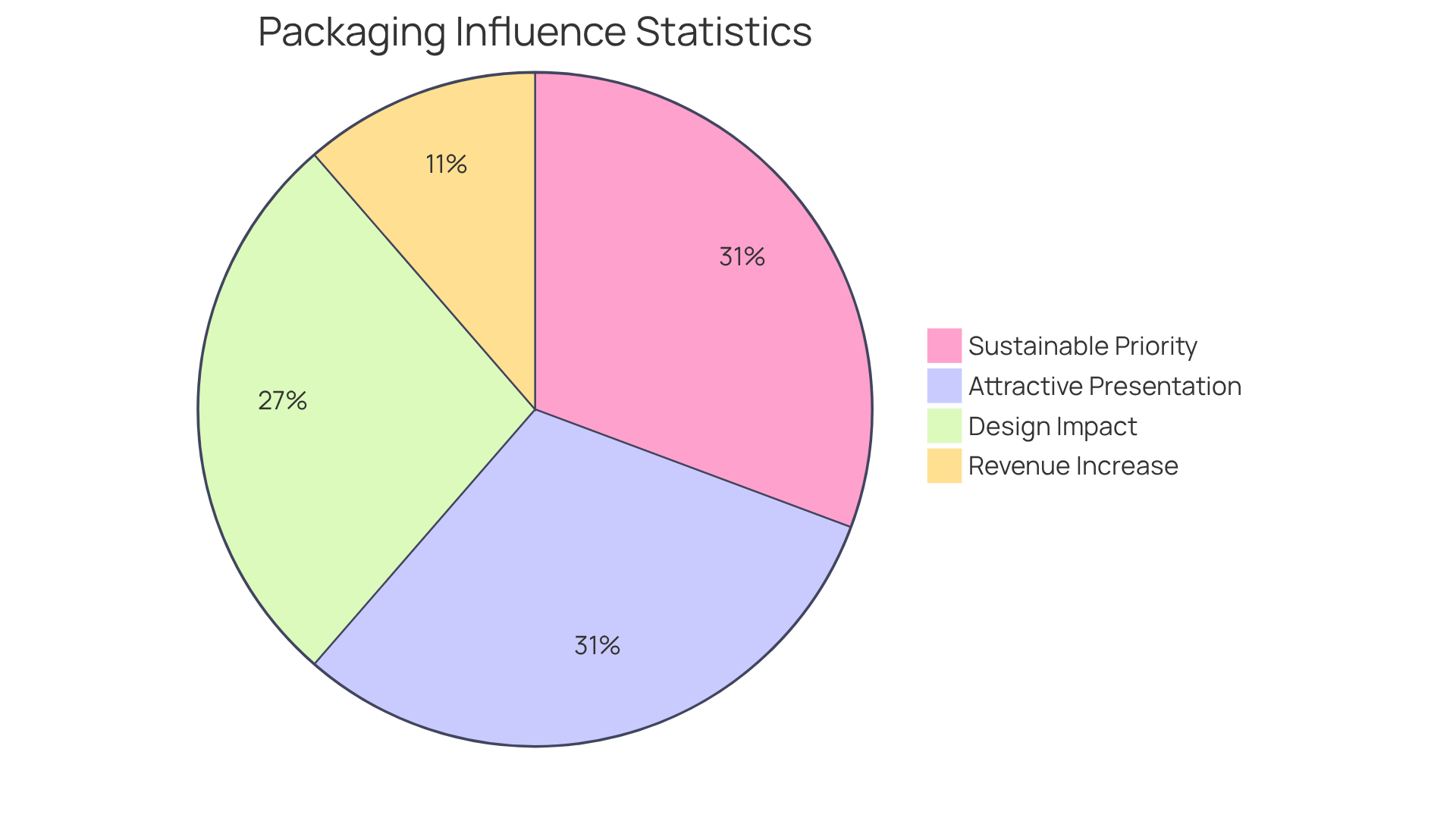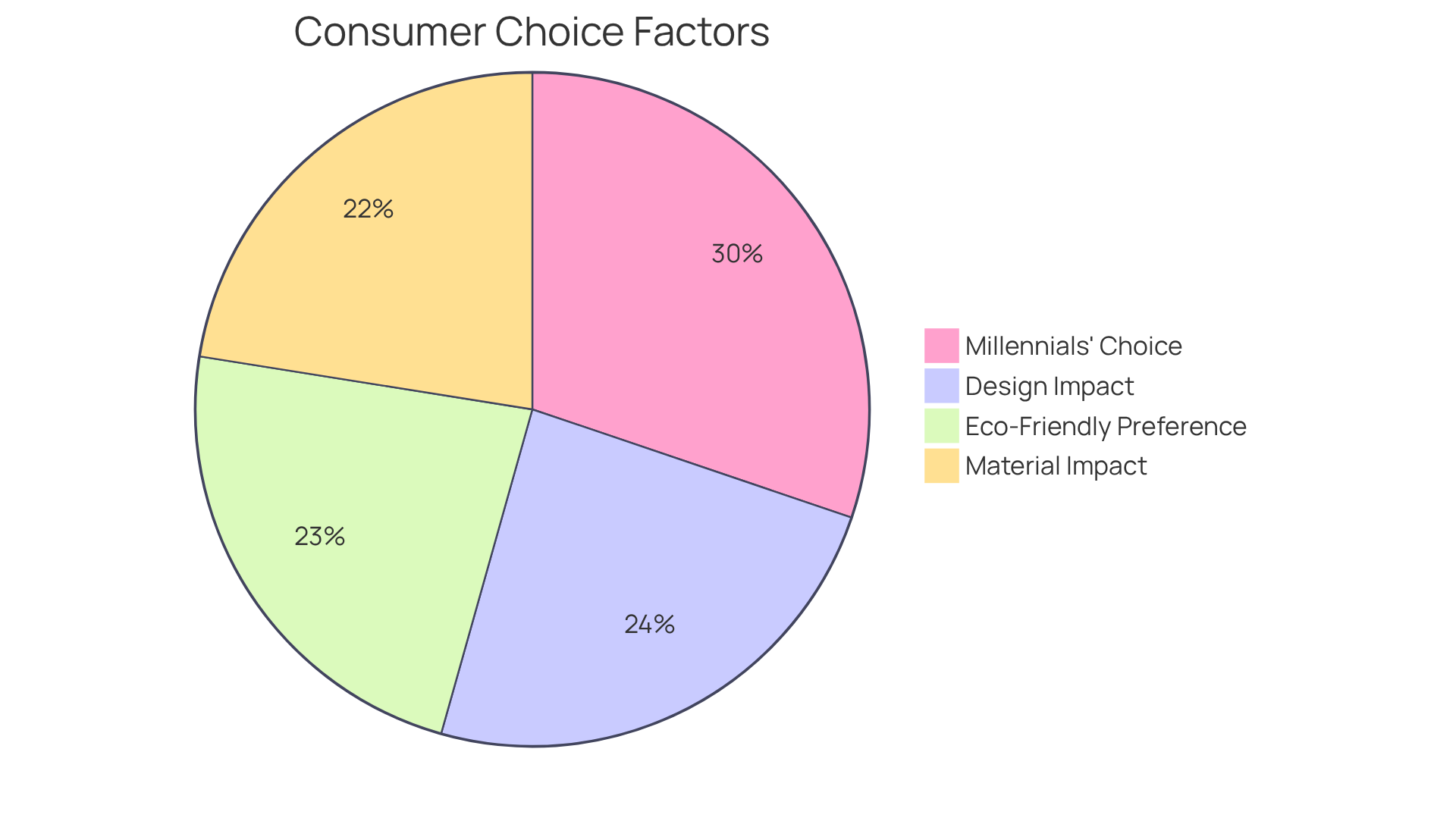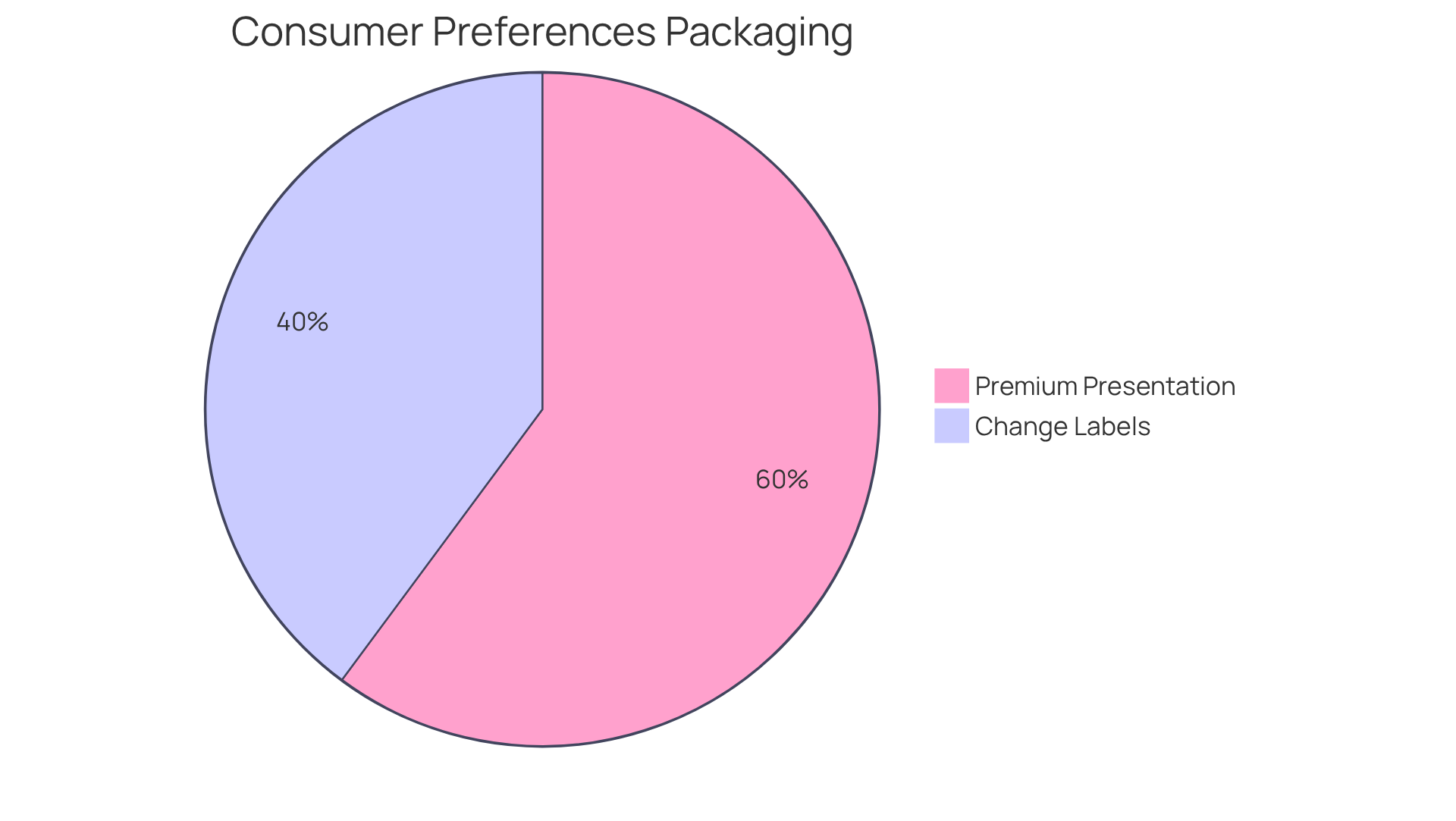Overview
Branding packaging is pivotal to product success, as it shapes buyer perceptions, influences purchasing decisions, and enhances market visibility, particularly in the nutraceutical sector. Effective packaging design—encompassing appealing visuals, clear messaging, and sustainable materials—significantly impacts consumer choices.
Statistics reveal that a majority of shoppers are inclined to pay more for products that feature attractive and eco-friendly packaging. This underscores the necessity for businesses to invest in quality packaging solutions that not only attract consumers but also align with their values.
Introduction
Branding packaging serves as the silent ambassador of a product, intricately weaving together design elements that communicate a company's identity and values. In an increasingly competitive nutraceutical market, understanding the nuances of effective packaging is essential for capturing consumer attention and driving sales. As consumer preferences shift towards sustainability and visual appeal, brands must navigate these complexities to ensure their packaging not only stands out but also resonates with health-conscious buyers.
How can brands achieve this balance?
Define Branding Packaging and Its Role in Marketing
Branding packaging involves the design and presentation of an item's wrapping, which effectively conveys the identity and values of the company. Critical elements such as color, typography, imagery, and material selection work in harmony to create a cohesive visual representation. In the competitive nutraceutical sector, effective branding design is crucial for distinguishing products and influencing buyer decisions.
Statistics reveal that:
- 72% of shoppers believe design significantly impacts their purchasing choices, underscoring its role in shaping product recognition.
- Distinctive wrapping communicates quality and effectiveness, appealing to health-conscious consumers and fostering loyalty to the brand.
- Successful case studies in the nutraceutical industry demonstrate that creative wrapping not only enhances product attractiveness but also drives sales.
- Brands utilizing eco-friendly materials and appealing designs often see increased customer engagement, with 81% of individuals admitting they have tried a new item due to its attractive presentation.
- Furthermore, 81% of shoppers prioritize sustainable wrapping, avoiding products packaged in harmful materials, which highlights the growing demand for eco-friendly alternatives.
- Therefore, investing in thoughtful branding materials is essential for businesses aiming to enhance market visibility and connect with their target audience, particularly as 30% of firms report a revenue increase after improving their product presentation.

Explore the Importance of Branding Packaging for Product Success
Branding packaging is crucial in shaping buyer perceptions and influencing purchasing decisions within the nutraceutical sector. It serves multiple functions: protecting the product, conveying essential information, and telling the company's story. Packaging that emphasizes natural components and sustainability appeals especially to environmentally aware individuals, mirroring a rising trend towards eco-friendly practices. Companies such as Herbalife and Garden of Life have effectively employed branding materials to establish a strong market presence, resulting in higher sales and improved customer loyalty. Furthermore, brands such as Patagonia and Lush have successfully incorporated sustainability into their wrapping strategies, showcasing the influence of eco-friendly practices on buyer engagement.
Current trends indicate that visually attractive wrapping, characterized by vibrant colors and clear messaging, significantly enhances shelf appeal, making items more enticing to potential buyers. Studies reveal that 74% of buyers are ready to spend extra on items featuring eco-friendly wrapping, underscoring the importance of aligning wrapping strategies with customer values. The psychological effect of colors, fonts, and graphics in containers can also affect perceptions and emotions, making it crucial for companies to consider these elements in their designs.
Moreover, effective container design not only draws attention but also fosters trust through clarity in labeling, which is essential for informed buyer decisions. As the nutraceutical market continues to evolve, brands that emphasize innovative and sustainable branding packaging solutions are likely to gain a competitive advantage, promoting both market growth and customer engagement. The global nutraceutical container market is anticipated to reach approximately USD 6.95 billion by 2030, emphasizing the importance of effective branding in the industry. Additionally, nutraceutical containers must address challenges such as product stability, shelf life, and regulatory compliance to ensure consumer protection and product transparency.

Identify Key Characteristics of Effective Branding Packaging
Effective branding packaging presentation embodies several critical characteristics that significantly contribute to its success. Firstly, it must be visually appealing, employing colors and designs that resonate with the brand's identity. Studies show that:
- 72% of American buyers believe that design significantly impacts their purchasing decisions, highlighting the importance of appealing visuals.
- 67% of buyers indicate that the materials utilized for branding packaging affect their choice to buy, emphasizing the significance of material selection.
Secondly, the wrapping should distinctly convey vital details, such as advantages, usage guidelines, and nutritional information, ensuring individuals can make informed choices. Thirdly, functionality is crucial; the container must support ease of use while safeguarding the product. Finally, sustainability has become an essential element, with:
- 69% of shoppers favoring companies that use environmentally friendly materials.
- 90% of millennials choosing eco-conscious companies, indicating a strong demographic trend towards sustainability.
For instance, Tupperware has embraced eco-friendly branding packaging options that not only cater to environmentally aware shoppers but also enhance their market reputation. Additionally, 40% of individuals are likely to share pictures of distinctive or labeled packaging on social media platforms, increasing visibility. This alignment with customer values is essential, as 94% of individuals are more likely to stay loyal to companies that show transparency in their practices. By incorporating these traits, companies can strengthen their market presence and cultivate customer loyalty.

The Evolution of Branding Packaging in the Digital Age
The digital era has profoundly transformed branding packaging strategies, compelling brands to prioritize online visibility and enhance consumer engagement. As e-commerce continues to grow, branding packaging must not only attract attention on physical shelves but also differentiate itself in digital marketplaces. This shift has resulted in a greater focus on branding packaging that is visually appealing and designed for shareable presentations on social media platforms. For example, a study shows that 42% of individuals are more inclined to share an item image on social platforms if it showcases distinctive or high-quality branding packaging, emphasizing the opportunity for companies to utilize user-generated material for increased exposure.
Furthermore, companies are progressively integrating augmented reality (AR) and QR codes into their containers to generate interactive experiences that involve users and offer supplementary information. A significant instance is Coca-Cola, which has effectively incorporated AR technology into its containers, enabling users to engage with the product in creative manners. This not only improves engagement with the company but also promotes loyalty, as customers value the additional benefits of interactive features.
In the context of e-commerce, effective branding packaging is essential for creating memorable first impressions, driving social media engagement, and influencing purchasing decisions. Statistics indicate that:
- 55% of shoppers have changed labels because of new design innovations, highlighting the essential role of presentation in sustaining customer loyalty.
- 83% of U.S. consumers expressed that premium presentation makes a product more appealing as a gift, underscoring the significance of quality wrapping during special occasions.
As brands navigate the evolving landscape of e-commerce, investing in innovative and engaging branding packaging solutions is not just a trend but a necessity for long-term success.

Conclusion
Branding packaging plays a pivotal role in shaping consumer perceptions and driving product success. The thoughtful integration of design elements, materials, and sustainability not only distinguishes products in a crowded market but also resonates with health-conscious and environmentally aware consumers. By effectively communicating a brand's identity and values through packaging, businesses can significantly influence purchasing decisions and foster brand loyalty.
Key insights reveal that visually appealing and informative packaging is essential for attracting buyers, particularly in the nutraceutical sector. Statistics indicate that a large majority of consumers are willing to pay more for products with eco-friendly packaging, underscoring the importance of aligning branding strategies with customer values. Additionally, the evolution of branding packaging in the digital age highlights the necessity of creating shareable and engaging experiences that enhance consumer interaction and loyalty.
As the market continues to evolve, businesses must recognize the critical impact of effective branding packaging on their overall success. Embracing innovative designs, sustainable materials, and interactive features can set brands apart in a competitive landscape. The commitment to thoughtful branding packaging not only drives sales but also strengthens customer relationships, ultimately paving the way for long-term growth and success in the industry.
Frequently Asked Questions
What is branding packaging?
Branding packaging refers to the design and presentation of an item's wrapping that conveys the identity and values of a company through elements like color, typography, imagery, and material selection.
Why is branding packaging important in marketing?
Branding packaging is crucial in marketing as it helps distinguish products in a competitive market, influences buyer decisions, and shapes product recognition, ultimately impacting sales and customer loyalty.
How does design affect purchasing decisions?
Statistics show that 72% of shoppers believe that design significantly impacts their purchasing choices, highlighting its importance in attracting consumers.
What role does packaging play in the nutraceutical sector?
In the nutraceutical sector, effective branding design is essential for distinguishing products, communicating quality and effectiveness, and appealing to health-conscious consumers.
What are the benefits of using eco-friendly packaging?
Brands that use eco-friendly materials and appealing designs often experience increased customer engagement, with 81% of individuals trying new items due to attractive presentation. Additionally, 81% of shoppers prioritize sustainable wrapping, avoiding products packaged in harmful materials.
What impact can improved product presentation have on a company's revenue?
Investing in thoughtful branding materials can enhance market visibility and connect with target audiences, with 30% of firms reporting a revenue increase after improving their product presentation.




